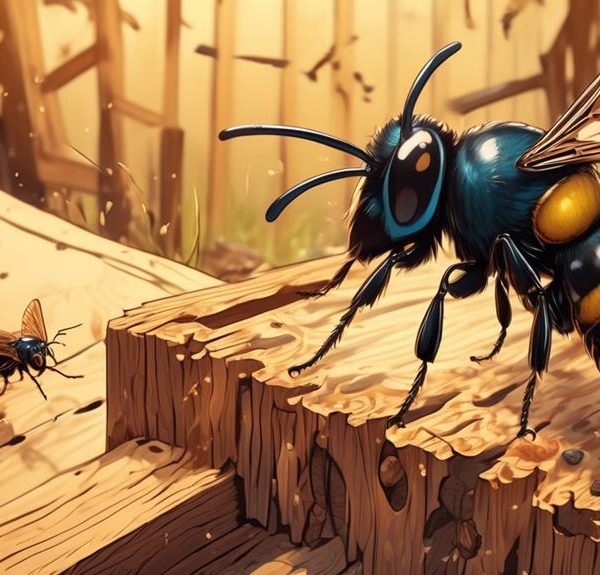Take a captivating journey into the world of carpenter bees and ants, exploring their intriguing differences and similarities, and learning how to detect their unwelcome presence.
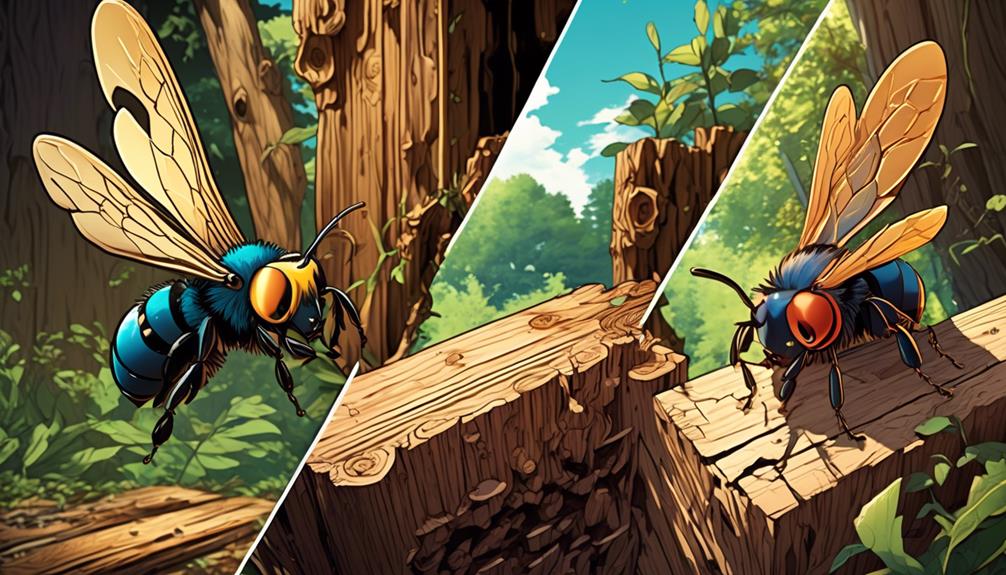
Carpenter Bees Vs Carpenter Ants
You've probably heard the saying, 'busy as a bee,' but when it comes to the world of carpentry insects, it's not just the bees that are hard at work. Carpenter bees and carpenter ants, named for their propensity to burrow into wood, are fascinating creatures with unique behaviors and impact on our environment.
Yet, they're not always welcomed, especially when human structures become their target. Now, let's embark on an intriguing journey to understand these creatures better, their differences, similarities, and the subtle signs that may indicate their unwelcome residence in your home.
So, don't stay in the dark, let's shed some light on the carpenter bees versus carpenter ants debate.
Key Takeaways
- Carpenter bees prefer to burrow into wood to nest, while carpenter ants hollow out wood to build their colonies.
- Carpenter bees are solitary creatures, while carpenter ants live in colonies.
- Carpenter bees do not consume wood, but excavate it to create nests, while carpenter ants remove wood to create nesting galleries.
- Carpenter bee damage is visible and mainly cosmetic, while carpenter ant damage is often hidden and can cause extensive structural damage.
Understanding Carpenter Bees
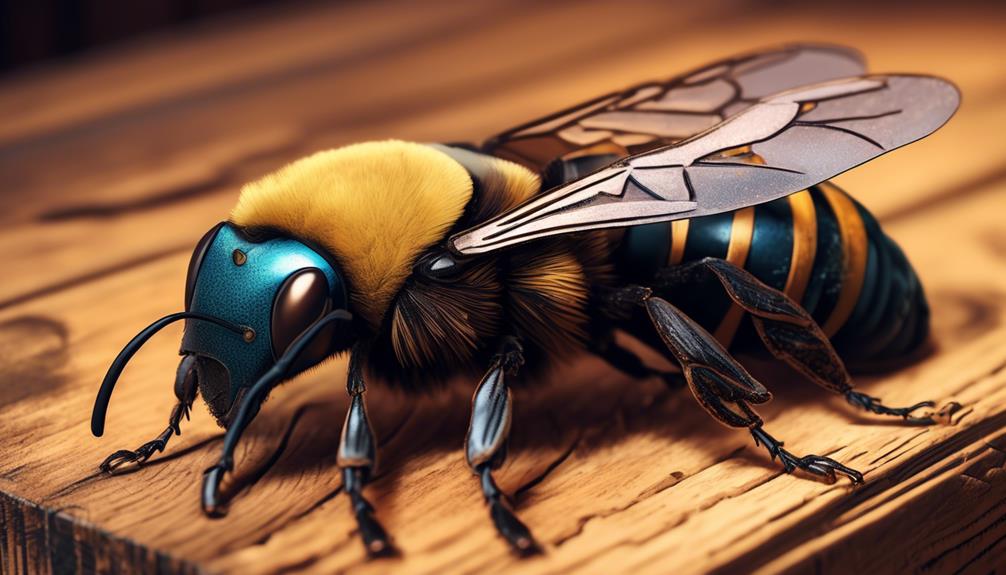
To fully comprehend the behavior and characteristics of carpenter bees, it's crucial to delve into their unique biology and lifestyle. Unlike typical bees, these solitary creatures prefer to burrow into wood to nest, hence their name. They're not social insects; each female is fertile and inhabits a single nest where she lays eggs and nurtures her offspring independently.
You'll often spot them in spring, hovering around your home's wooden structures. But don't panic. Carpenter bees are generally harmless. The females can sting but rarely do unless directly provoked. The males, despite their aggressive flying, can't sting at all.
However, their nesting habits can cause significant damage to your property over time. They drill holes into wood to create tunnels where they lay their eggs. Each tunnel contains a series of cells, each housing an egg and a supply of pollen and nectar for the hatching larva.
Understanding their biology and behavior is key to managing and mitigating their impact. Remember, they're important pollinators, so it's not about extermination, but rather about controlling their nesting sites to prevent damage to your property.
Identifying Carpenter Ants
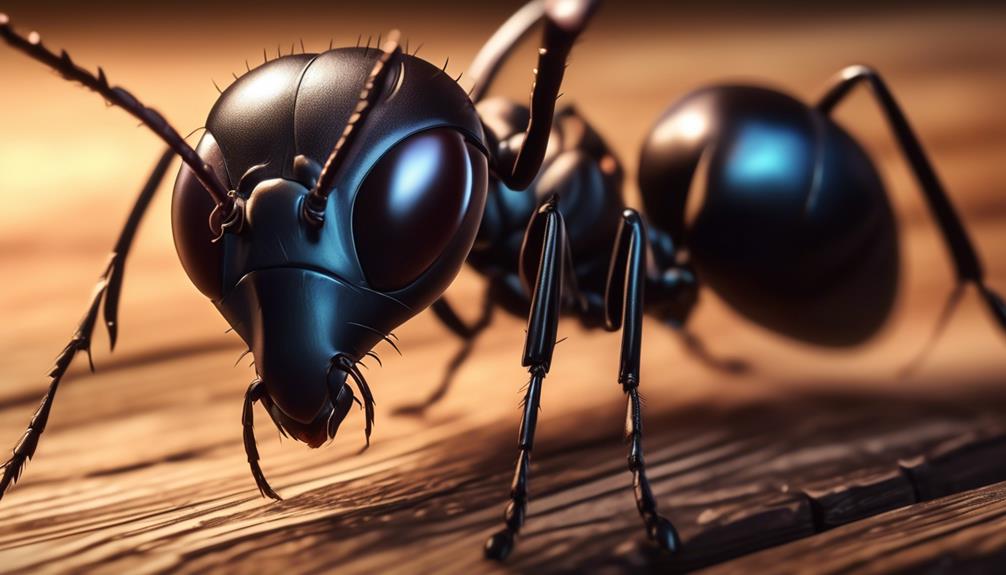
While understanding carpenter bees and their nesting habits is crucial, it's equally important to be able to identify carpenter ants, another species known for their wood-boring abilities. These ants are typically 1/4 to 1/2 inch in length, and they've a well-defined, rounded thorax when viewed from the side. They're usually black, but can also be dark brown or red. If you see ants with large mandibles and a waist with one node, you're likely looking at a carpenter ant.
These ants make their nests in damp, decayed wood, but they can also excavate tunnels in solid wood. Unlike termites, carpenter ants don't eat wood – they simply remove it to create nesting galleries. You might spot frass, a sawdust-like material, near their nests. This is the debris they've excavated.
Don't be fooled by the winged carpenter ants you might see in the spring. While they're often mistaken for termites, a closer look reveals key differences. Carpenter ants have a narrow waist, bent antennae, and wings of unequal length. Understanding these features will help you accurately identify these wood-boring insects.
Behavior and Habitat Differences
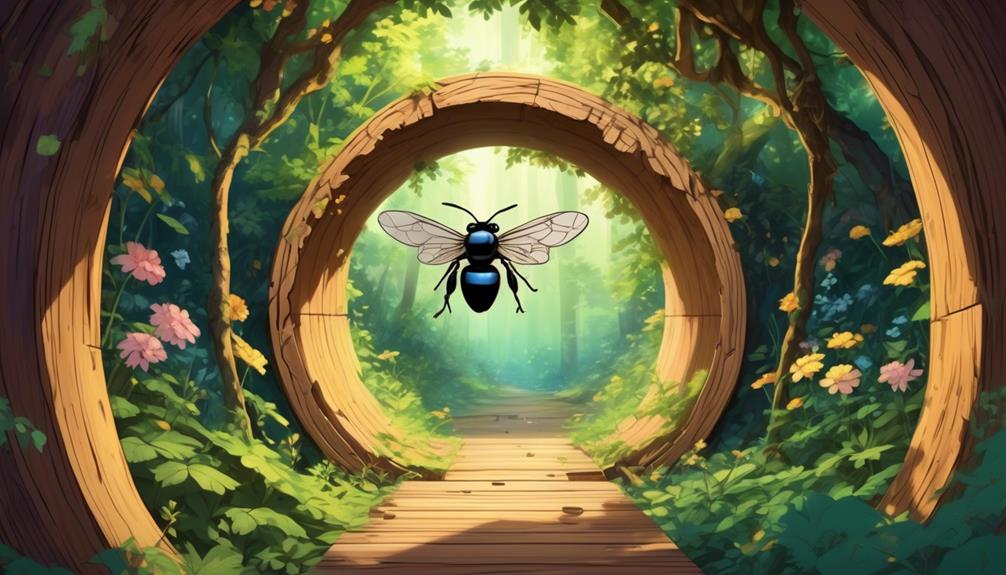
Diving deeper into the world of carpenter bees and carpenter ants, you'll notice significant differences in their behavior and habitat preferences that play a pivotal role in understanding their impact on your home.
Carpenter bees, unlike their name suggests, don't consume wood; they excavate it to create nests. They're solitary creatures, with each female bee digging her own tunnel and laying eggs. Their preferred habitats are usually wood structures like your deck or fence. They're not aggressive, but female bees can sting if threatened.
Carpenter ants, on the other hand, are social insects living in colonies. They nest in moist, decaying wood but can expand into sound wood and insulation. You'll often find them inside structures where there's water damage. Unlike bees, they don't bore holes but excavate galleries, leaving behind sawdust-like material called frass. They show aggressive behavior when their colonies are disturbed.
Understanding these differences is crucial. Carpenter bees cause cosmetic damage, but their habits can weaken structures over time. Carpenter ants, conversely, can cause significant structural damage. Therefore, identifying their behaviors and habitats promptly can prevent costly repairs.
Impact on Human Structures
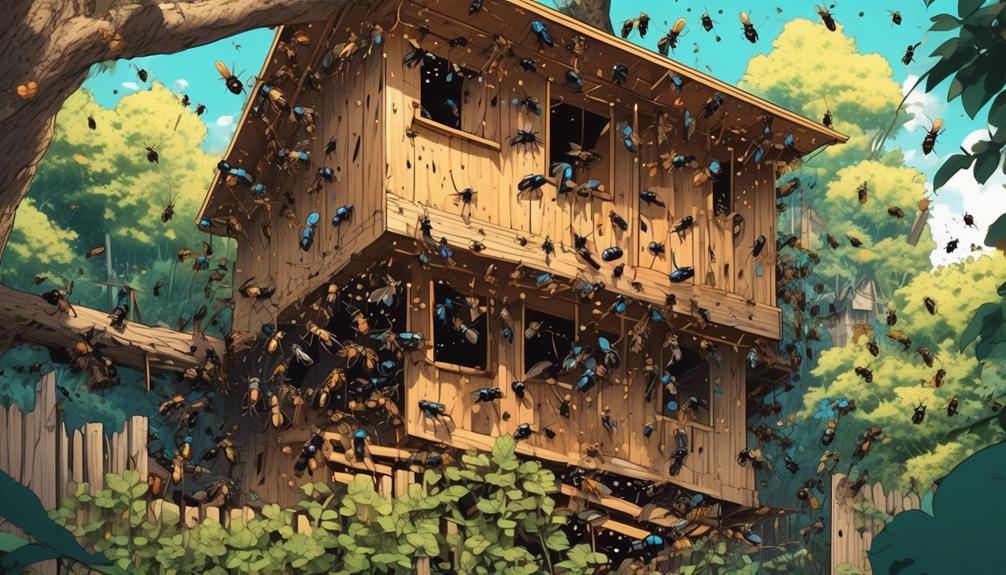
Often, you might overlook the subtle signs of infestation, but both carpenter bees and ants can have a serious impact on human structures if left unchecked. These insects don't just create cosmetic damage; they can undermine the structural integrity of your home, causing potential safety hazards.
Carpenter bees bore circular holes into wood to create nesting sites. They prefer untreated wood and can cause considerable damage over time. Carpenter ants, on the other hand, hollow out wood to build their colonies. They're known for causing extensive damage, often unseen until it's significant.
Here's a quick comparison:
Carpenter Bees | Carpenter Ants | |
|---|---|---|
Preferred Material | Untreated Wood | Any Wood |
Damage Type | Boring Holes | Hollowing Out |
Damage Visibility | Visible | Often Hidden |
Safety Risk | Potential | Significant |
You can't afford to ignore these pests. Regular inspections are key in early detection and mitigation of their damage. Engage a pest control professional if you spot any signs of these wood-destroying insects. Understanding the battle of carpenter bees vs carpenter ants allows you to better protect your home from their destructive tendencies.
Effective Control Methods
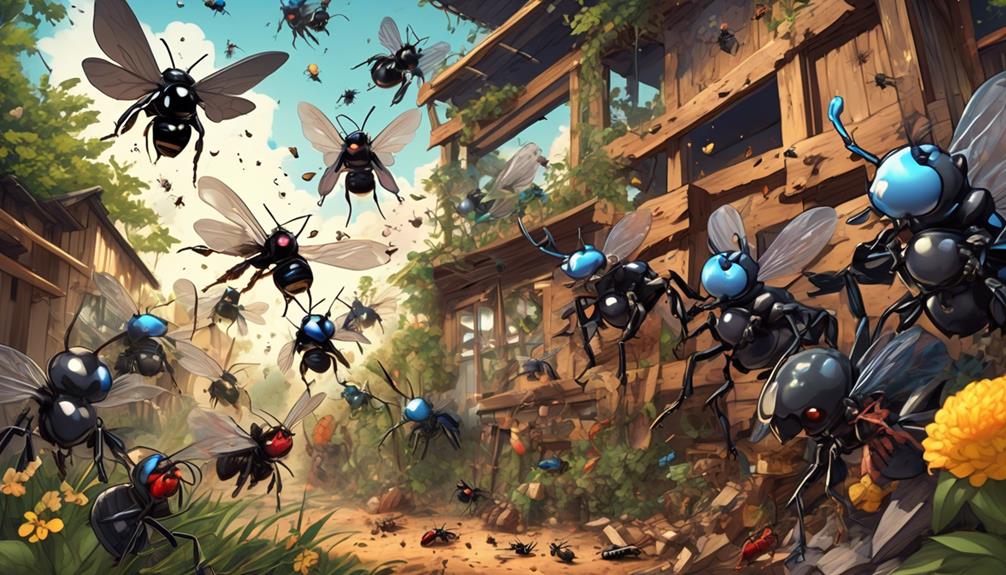
Now that you're familiar with the havoc these insects can wreak on your property, let's explore effective control methods to keep carpenter bees and ants at bay.
First, it's crucial to identify the presence of these pests. Carpenter ants leave a sawdust-like material, called frass, outside their nests, while carpenter bees make round, smooth holes in wood. Once you've spotted these signs, it's time to take action.
For carpenter bees, insecticidal dust is an effective remedy. Apply it directly into the nest, preferably at night when the bees are less active. This method usually eliminates them within a few days. Alternatively, consider using traps that lure and trap the bees without the use of harmful chemicals.
Carpenter ant control involves treating the nest directly with a non-repellent insecticide. However, since these ants often nest inside walls, professional pest control is usually the best option. Baits can also be effective if placed in areas where ants forage for food.
But prevention is better than cure. Regularly inspect your property for signs of these pests, maintain a dry environment, and seal potential entry points. Remember, a swift and decisive response is key to keeping these destructive insects in check.
Conclusion
You've now grasped the differences between carpenter bees and ants. Understanding their unique traits, behaviors, and habitats helps in identifying them.
Both can damage your property significantly, but the impact varies. Prevention is key, and effective control methods are crucial in managing these pests.
Stay informed, vigilant, and ready to act to ensure the structural integrity of your home doesn't fall victim to these industrious creatures.


